Majsan Island
Roman ruins (including a villa) lie a short boat trip away from the historic town of Korčula on the island of Majsan. The island offers a worthwhile day trip destination in the nearby archipelago opening up a fascinating, hidden past. The island offered valuable shelter for various ships going up and down the Adriatic, being inhabited from ancient times up to the end of the Middle Ages.
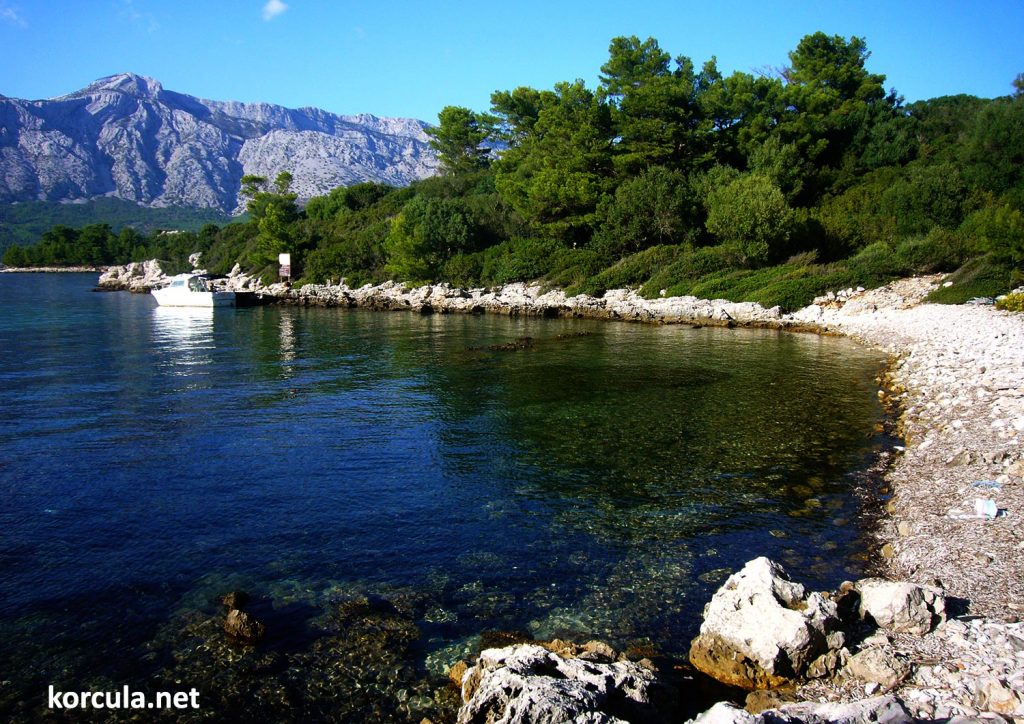
Shaped like a sleeping crocodile when viewed from the boat (or a manta ray when viewed from a seagull) the island had been an important anchoring point in antiquity. Its mysterious past and still serenity of its sheltered cove gives hidden clues to the development of the nearby city of Korcula, the region of Dalmatia as well as the whole of the Adriatic.
History of the Island
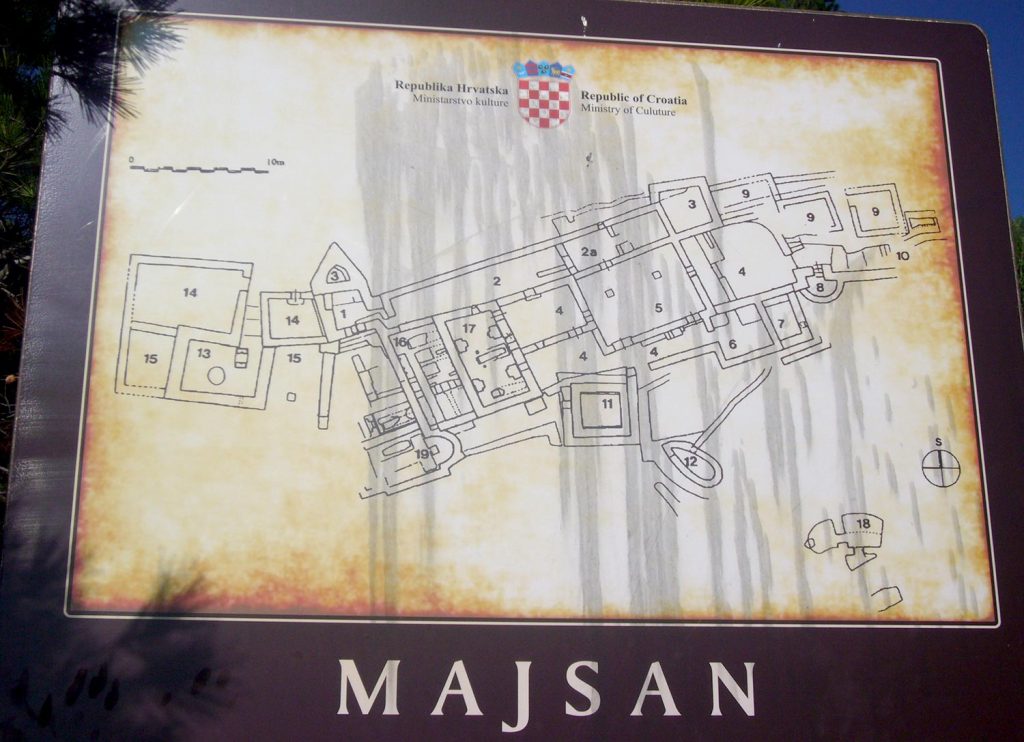
Located at a vital strategic point in the Korčula archipelago, the island contained a population of fishermen from the first century AD who started building the small settlement in the bay.
The buildings formed the basis for the construction of a small monastery with the advent of early Christianity. The 4th century A.D church was dedicated to St Maxmillian, from which was derived the name Majsan.
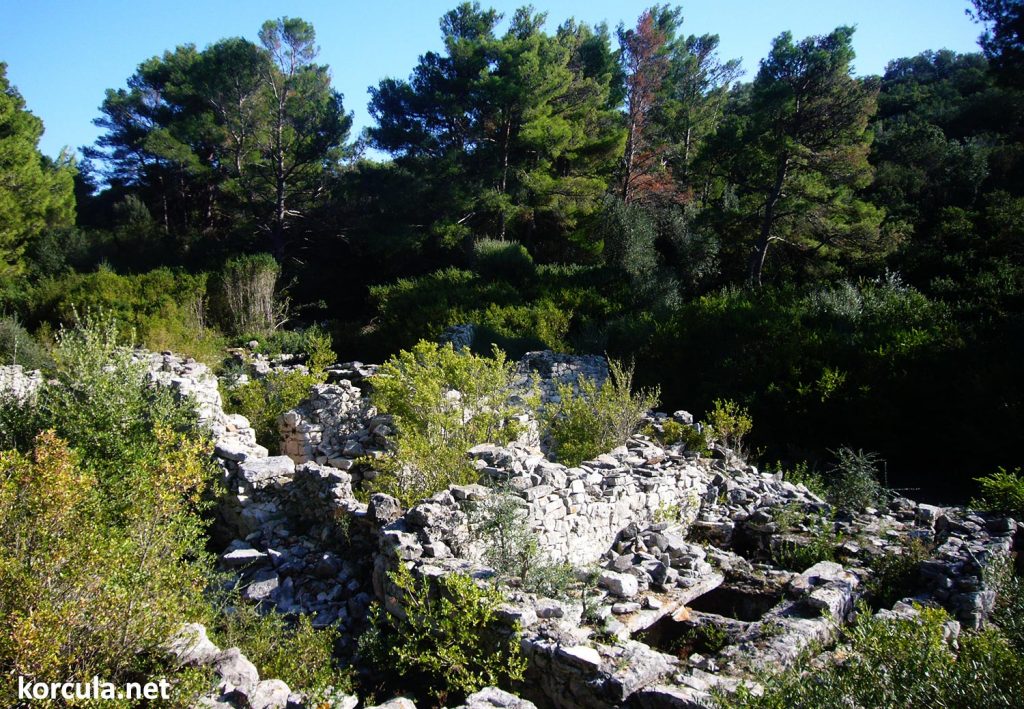
The remains of their abandoned settlement can still be seen today. The enchanting ruins of the archaeological site contain amongst other things remains of an early medieval chapel, an olive mill and a kitchen. A short hike to the top of the island brings you to the wonderful viewpoint that used to contain a watchtower for the control of the mid-Adriatic waterways in this vital strategic position between the Pelješac peninsula and the island of Korčula.

Archaeological excavations in the 1960s revealed numerous finds from the Roman and Byzantine period, including coins, jewelry and liturgical installations. These can be seen today at the Maritime Museum in nearby Orebić.
On All Saints Day in the year 1000, Majsan was the site of the Venetian invasion of the province of Dalmatia. Doge Peter Orsello II, who hoped to secure the Eastern Adriatic for Venetian commercial purposes, since its trade had been constantly threatened by the rival Croatian state.
After a triumphant journey down the Adriatic where his fleet was welcomed in many places, arriving in Korcula, the Doge found the locals a tougher nut to crack. Anchoring off Majsan, Orsello used the island as a base for his fleet for his conquest of Korčula and nearby Lastovo. It would be from here that Korcula entered the Venetian orbit, a cultural legacy that has remained visibly present until today.
Popular Routes: Split to Korcula, Korcula to Split, Dubrovnik to Korcula, Korcula to Dubrovnik
In the aftermath of this voyage, the Venetian Doge gained the title Duke of Dalmatia. The Venetian’s annual ‘marriage to the sea’ ritual (festa della Sensa) that takes place annually in the city of the Lagoon recalls Orsello’s epochal conquest of Dalmatia. Since then, the Venetians cast aspirations on the Eastern Adriatic, consolidating their control over Korcula in 1420. The Venetians remained in the region on and off for centuries, leaving only in 1797. Thus it can be said that the Venetian empire was conceived on Majsan.
Map
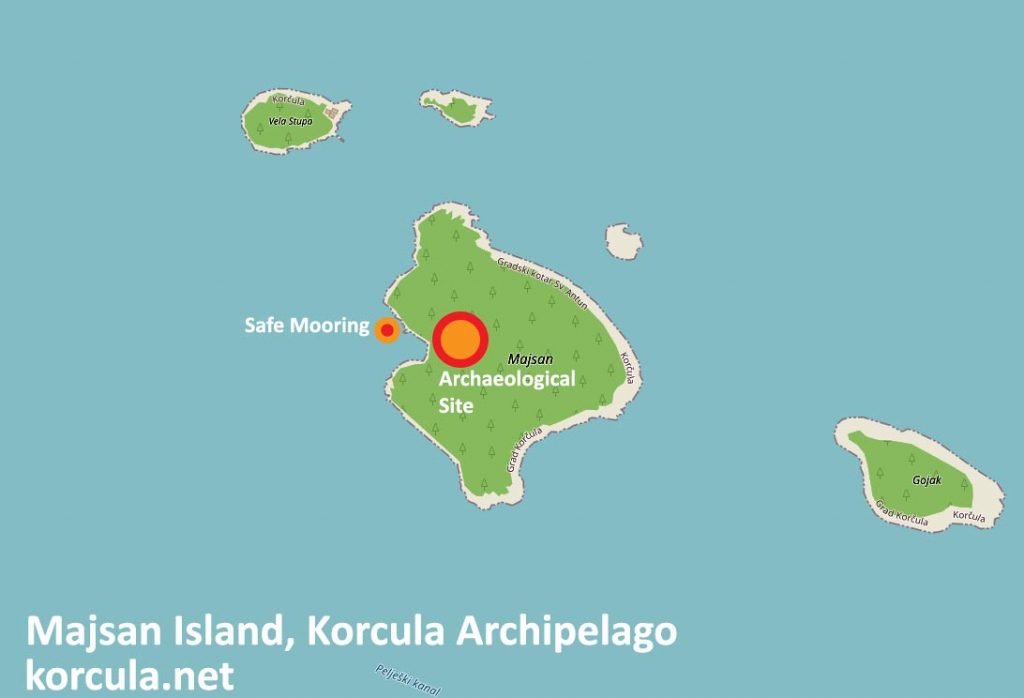
How to get there
- Hire a boat from Korčula town or from Lumbarda.
- Take a water taxi
- If you have your own boat, secure mooring is available for bigger boats
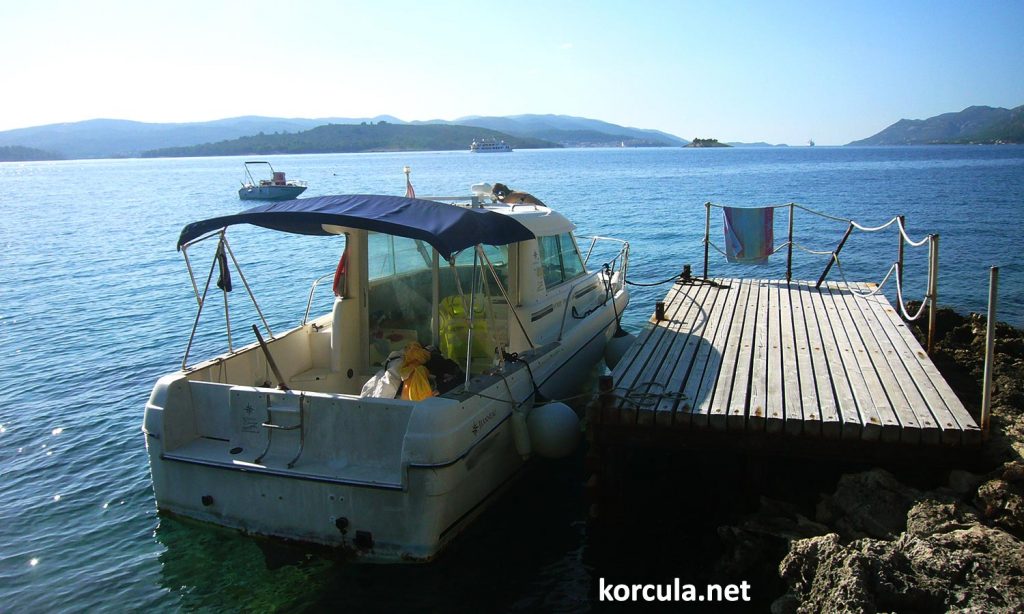
What to see and do
- An archaeological site with ruins of an early 4-century settlement in the Lučica bay.
- Wonderful views of the Korčula archipelago from the top of the island.
- Diving and snorkeling can reveal Roman amphorae remains

Majsanić
The small islet of Majsanić (little Majsan) lies just aside its larger namesake, Majsan.
With its nearby bigger version representing a green manta ray from the sky, Majsanić seems to be the little pilot fish that seeks shelter around the larger fish.
Uninhabited and almost barren, it is a sparse, rocky reef with small bits of vegetation on it. The sea around it is a location of a shipwreck from antique times, with the remains of the amphorae still visible around the island.
Measuring several square meters across, it provides a small place for sunbathing if the sea is not too choppy. Perfect to escape the crowds at Stupe by swimming and relaxing on a small island of your own!
How to reach it
Get to Majsan or Stupe via boat or taxi boat and then swim to it. Moor at Majsan then take a dingy or a canoe/ kayak to it.
When to Go: June to September
How Long Should You Visit
Half an hour on for a selfie, half an hour in the seas around it to discover the submerged amphorae. Longer if you want to sunbathe.
